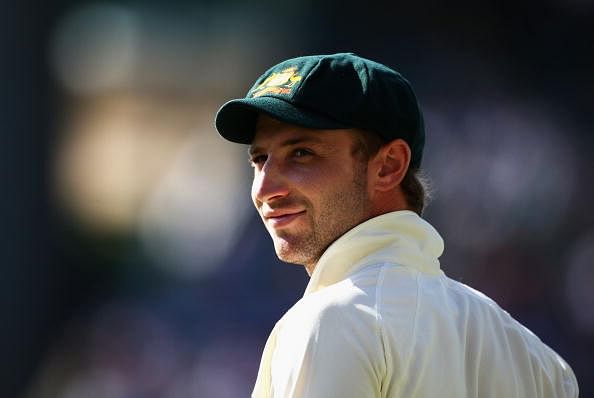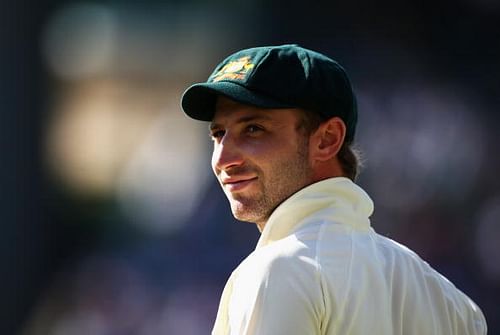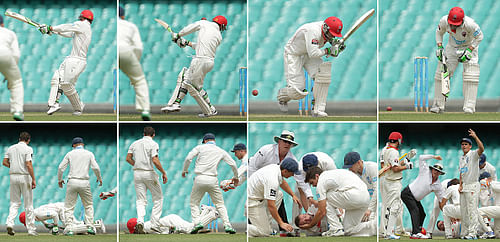
Are helmets preventing perfecting the technique of playing the short ball?

Through this post, I’d like to carry forward the point Geoffrey Boycott made in the immediate aftermath of Phillip Hughes’ accident. Boycott wrote an article for a UK based newspaper, which can be read here.
As a Test cricket fan, I would have liked to see a little more attention given to this sentiment. However, in light of the way events unfolded, I understand why the hugely fraternal cricketing community has been tight-lipped so far. Although the wounds are still fresh, credence needs to be given to this issue immediately since good technique against the short-pitched ball can prevent injuries just about as effectively as good helmets, and young players hoping to play on fast, bouncy wickets need to know that.
Boycott, in his article, alludes to the way tail-enders come out “batting like millionaires” taking wild swings at short-pitched deliveries, and a large part of that, if not all of it, is due to helmets. More specifically, it is due to the false sense of security that the helmet has lulled them into.
The Pataudi-Gavaskar way of playing bouncers
First of all, players have been getting hit on their heads since cricket was first played, and that’s a risk that they grow up coming to terms with. They are immensely brave individuals, all or most of whom probably belong to Gryffindor in some parallel universe, and I tip my hat to them. To be hit on the head by a fast bowler, before the advent of the helmet, and escape without a major injury must surely find its place in the Oxford thesaurus under the phrase ‘cheating death’.
Indian fans will remember Nari Contractor being hit squarely on the temple by Charlie Griffith in the infamous 1961 tour of the West Indies. Contractor was lucky to be alive and walking after that episode and subsequent surgery, never mind playing cricket. His replacement at the crease on that fateful day, and his successor as captain, the Nawab of Pataudi, played against the same battery of pace bowlers and never once got hit on the head. If that isn’t enough of an achievement by itself, the Nawab did it with only one good eye. He had lost all use of the other one in a car crash.
Gavaskar was another who never got hit on the head, and he spent more time at the crease against fast bowlers on treacherous wickets in a single match than other batsmen might spend in an entire series.
There are two aspects to being hit on the head, with or without the helmet: one is the technique and the other is bravery.
These batsmen had both these things going for them. They knew when to play and when to duck. They picked up the length of the ball quickly. They might not have hooked or pulled as much as some of their counterparts, but that didn’t stop them from scoring Test centuries against every major Test opponent.
Batsmen shouldn’t turn their heads away

Phil Hughes had grown up playing on fast, bouncy Australian wickets. Apart from domestic cricket, Hughes had cut his teeth for the international side over the past few seasons and is the youngest Australian to score a century in both innings of a Test match. That record shall stand for a long time. To top it off, that feat was achieved in South Africa against bowlers consistently clocking in excess of 145 kmph. Yet the delivery that crashed into the lower part of his neck was slightly faster than 135 kmph and was outright short; it did not rise exceptionally from a good length as we sometimes see at Perth.
On close inspection of the video, it becomes evident that Hughes was beaten by the bounce, not by the pace. The ball simply bounced more than he anticipated. He knew he wanted to hook it away. By all measure, that does not seem to have the makings of a potentially fatal injury. On the other hand, the sort of injury that looks most frightening is when a batsman has lost sight of the ball entirely or when he sometimes doesn’t pick up the length at all and tends to duck into the rising ball. Batsmen in those situations don’t know whether to play or duck. In a sense, that misjudgment is more severe than Hughes’. Hughes’ misfortune cannot be understated for this particular reason.
A lot of times in the modern game we see batsmen turning their heads away from the bouncer as a sort of reflex. Proper technique of playing this ball demands that they must keep the ball in their vision for as long as possible and not turn their heads away. Turning the head away exposes them to the same sort of injury as Hughes, and I’d like to see that taken out of the game. Turning the head away is not how players are coached. It’s not what Gavaskar did; it’s not what the Nawab did.
Batsmen need to find the balance between technique and instinct to make the game safer. I know it’s probably asking for a lot, but if players in the past could do it, there’s no reason the modern Test batsman cannot emulate them and perfect this technique.
Tendulkar had an unconventional way of leaving the short-pitched ball where he would keep his feet planted in the same place and sway backwards while keeping his head quite still. This requires immense flexibility in the lower back, and it worked for him more often than not. I’m not sure if coaches would recommend this method, but it’s worth looking into because at least the batsman knows where the ball is going.
Bravery v foolhardiness
The other issue is that of bravery. What does one define as bravery? Sometimes we become disillusioned into believing that a batsman who goes after every short-pitched delivery is brave. But is that the case? I don’t think so. That’s aggression, not bravery. Anil Kumble continuing to bat after fracturing his jaw, then coming out to bowl and taking Brian Lara’s wicket is bravery (one more bias).
Sometimes the aggression moves into the territory of foolhardiness as England learned on the last day of the famous 2014 Lord’s Test against India. The English batsmen’s persistence to pull was responsible for their monumental downfall as much as good bowling from Ishant Sharma. Discretion is, indeed, the better part of valour, and batsmen probably need to pay a little more attention to this, not just in the interest of safety but also in the interest of the outcome of the match.
Cricket is a combative sport, and accidents are bound to happen. But we must do whatever we can to prevent them from getting out of hand. We cannot do anything to prevent freak accidents, but we can reduce the probability of batsmen getting hit due to the shortcomings in their own technique. As a fan, it is apparent that there is definitely scope for improvement in batting technique, and that’s what we’ve got to focus on. As fans, it is our duty to make ourselves heard if we feel the game will be better from it.